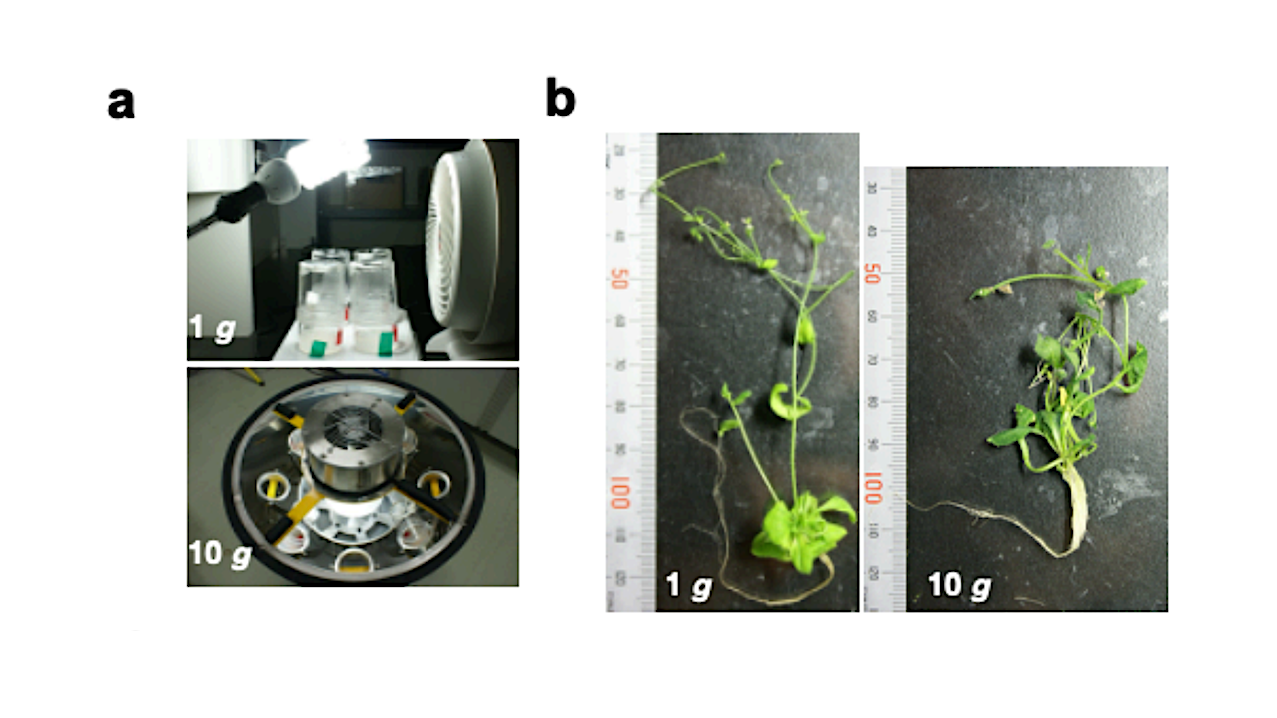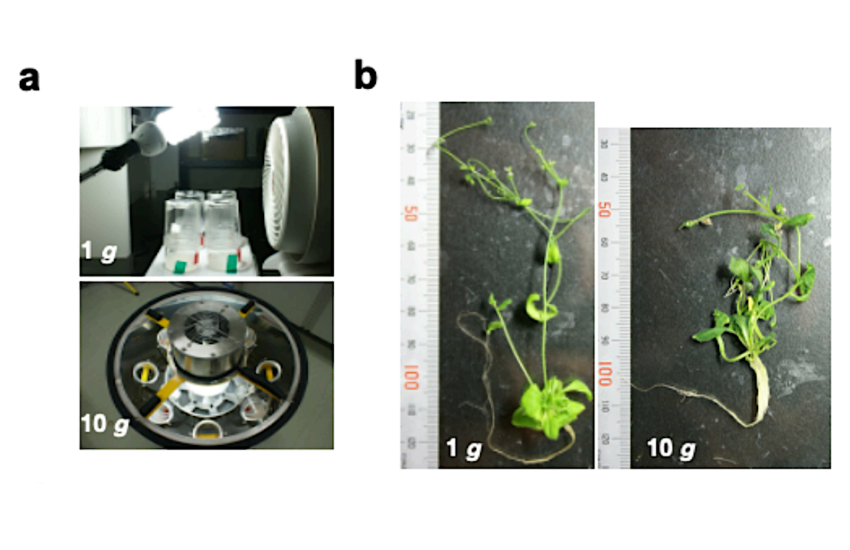
Setup of the hypergravity experiment (a) and the morphology of a typical 40-d-old Arabidopsis
406 plant under 1 g control conditions or following exposure to 10 g hypergravity (b). — biorxiv.org
Previous studies have already shown that plants can complete their life cycle under microgravity. However, the effects of long-term exposure to altered gravity conditions, including microgravity, on most of the biological processes of a plant’s life cycle remain largely unexplored.
Given the limited opportunities for space experiments, it is crucial to conduct ground-based experiments, such as hypergravity experiments. To investigate the longer-term effects of hypergravity, we have developed and utilized a custom-built hypergravity cultivation system using a centrifuge equipped with lighting, enabling the continuous growth of seed plants under hypergravity conditions.
In this study, we examined the effects of 10 g hypergravity on the biomass of the shoot system (stems and rosette leaves) and the root system of vascular plants for the first time, covering the entire cultivation period from germination to 40 days. Our results showed that the dry mass of the stem per unit length was significantly higher under 10 g compared to the 1 g control, indicating a typical gravity resistance response of the stem. Moreover, the total dry mass of the stems, rosette leaves, and roots was higher under 10 g hypergravity compared to the 1 g control, suggesting an increase in biomass at the individual plant level.
We also observed that the leaf mass per area of the rosette leaf was higher under hypergravity compared to the 1 g control, indicating enhanced photosynthesis rates in Arabidopsis and resulting in increased biomass of individual plants. In terms of biomass allocation, both root-shoot ratio and root mass fraction were significantly higher under hypergravity conditions compared to the 1 g control. Furthermore, we measured the content of mineral elements (Ca, Co, Cu, Fe, K, Mg, Mn, Mo, P, Zn) in the roots and rosette leaves using inductively coupled plasma optical emission spectrometry.
Despite the increase in dry mass of the root system, we found no significant differences in the content of any of the ions analyzed between 10 g and 1 g conditions, indicating that mineral nutrient uptake homeostasis is maintained even under hypergravity conditions.
Astrobiology, Space biology,

